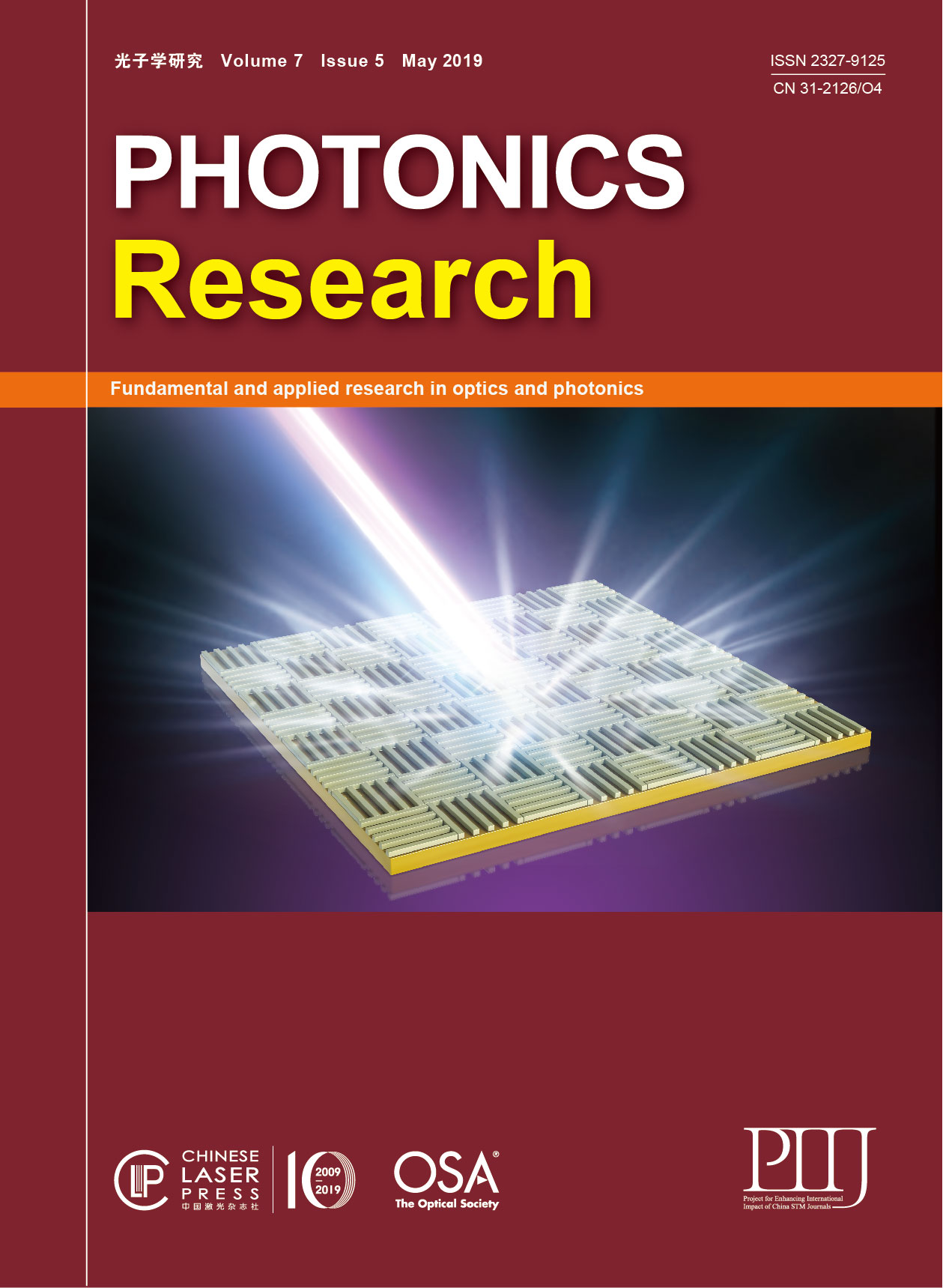Recently, a teleportation scheme using a two-mode squeezed state to teleport a photonic qubit, so called a “hybrid” approach, has been suggested and experimentally demonstrated as a candidate to overcome the limitations of all-optical quantum information processing. We find, however, that there exists the upper bound of fidelity when teleporting a photonic qubit via a two-mode squeezed channel under a lossy environment. The increase of photon loss decreases this bound, and teleportation better than this limit is impossible even when the squeezing degree of the teleportation channel becomes infinity. Our result indicates that the hybrid scheme can be valid for fault-tolerant quantum computing only when the photon loss rate can be suppressed under a certain limit.
.- Publication Date: Apr. 15, 2019
- Vol. 7, Issue 5, A7 (2019)
We report on AlGaN-based tunnel heterojunctions grown by metalorganic vapor phase epitaxy enabling fully transparent UVC LEDs by eliminating the absorbing p-AlGaN and p-GaN layers. Furthermore, the electrical characteristics can be improved by exploiting the higher conductivity of n-AlGaN layers as well as a lower resistance of n-contacts. UVC LEDs with AlGaN:Mg/AlGaN:Si tunnel junctions exhibiting single peak emission at 268 nm have been realized, demonstrating effective carrier injection into the AlGaN multiple quantum well active region. The incorporation of a low band gap interlayer enables effective tunneling and strong voltage reduction. Therefore, the interlayer thickness is systematically varied. Tunnel heterojunction LEDs with an 8 nm thick GaN interlayer exhibit continuous-wave emission powers
- Publication Date: Apr. 29, 2019
- Vol. 7, Issue 5, B7 (2019)
- Publication Date: Apr. 17, 2019
- Vol. 7, Issue 5, 532 (2019)
- Publication Date: Apr. 30, 2019
- Vol. 7, Issue 5, 594 (2019)
- Publication Date: Apr. 30, 2019
- Vol. 7, Issue 5, 579 (2019)
- Publication Date: Apr. 11, 2019
- Vol. 7, Issue 5, 503 (2019)
- Publication Date: Apr. 18, 2019
- Vol. 7, Issue 5, 543 (2019)
- Publication Date: Apr. 30, 2019
- Vol. 7, Issue 5, 586 (2019)
- Publication Date: Apr. 29, 2019
- Vol. 7, Issue 5, 566 (2019)
- Publication Date: Apr. 25, 2019
- Vol. 7, Issue 5, 573 (2019)
- Publication Date: Apr. 11, 2019
- Vol. 7, Issue 5, 494 (2019)
- Publication Date: Apr. 22, 2019
- Vol. 7, Issue 5, 549 (2019)
- Publication Date: Apr. 12, 2019
- Vol. 7, Issue 5, 508 (2019)
- Publication Date: Apr. 15, 2019
- Vol. 7, Issue 5, 518 (2019)
- Publication Date: Apr. 16, 2019
- Vol. 7, Issue 5, 526 (2019)
- Publication Date: Apr. 29, 2019
- Vol. 7, Issue 5, 558 (2019)
- Publication Date: Apr. 15, 2019
- Vol. 7, Issue 5, 513 (2019)














